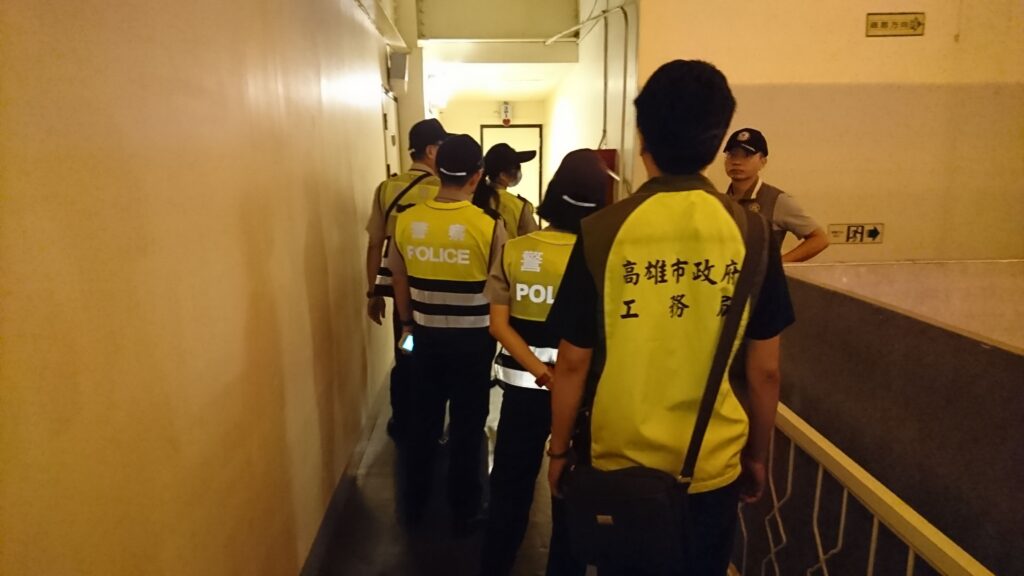when was alcohol illegal
The temperance movement and the Eighteenth Amendment, https://www.britannica.com/event/Prohibition-United-States-history-1920-1933, The National WWI Museum and Memorial - Prohibition, PBS - Unintended Consequences of Prohibition. As a result, the Prohibition era also is remembered as a period of gangsterism, characterized by competition and violent turf battles between criminal gangs. The words of Rush and other early temperance reformers served to dichotomize the use of alcohol for men and women. Top 10 MAIN countries where alcohol is illegal, RANKED [81][82], As early as 1925, journalist H. L. Mencken believed that Prohibition was not working. Prohibition is the act or practice of forbidding something by law; more particularly the term refers to the banning of the manufacture, storage (whether in barrels or in bottles ), transportation, sale, possession, and consumption of alcoholic beverages. People can misuse substances one time, occasionally, or regularly, and they can go on to develop substance use disorder. It was also at the forefront of the minimal integration efforts going on at the time, as it united mostly black musicians with mostly white audiences. That type of smuggling became riskier and more expensive when the U.S. Coast Guard began halting and searching ships at greater distances from the coast and using fast motor launches of its own. According to Prohibition historian Daniel Okrent, windfalls from legal alcohol sales helped the drug store chain Walgreens grow from around 20 locations to more than 500 during the 1920s. When the 65th Congress convened in March 1917, the dries outnumbered the wets by 140 to 64 in the Democratic Party and 138 to 62 among Republicans. On October 28, 1919, Congress passed the Volstead Act, the popular name for the National Prohibition Act, over President Woodrow Wilson's veto. By the terms of the amendment, the country went dry one year later, on January 17, 1920.[20][21]. [95] Home-distilled hard liquor was called bathtub gin in northern cities, and moonshine in rural areas of Virginia, Kentucky, North Carolina, South Carolina, Georgia, West Virginia and Tennessee. They also point out that alcohol has a much stronger link with violence than marijuana, which is still an illegal drug in many states. Welskopp, Thomas. [64][168], Prohibition had a notable effect on the alcohol brewing industry in the United States. Preachers such as Reverend Mark A. Matthews linked liquor-dispensing saloons with political corruption. Boyd Vincent, "Why the Episcopal Church Does Not Identify Herself Openly With Prohibition". 5 hours from last drink 0.075% . The Coast Guard also played a role in implementation, pursuing bootleggers attempting to smuggle liquor into America along its coastline. Alcohol Laws by State | Consumer Advice [62], In a backlash to the emerging reality of a changing American demographic, many prohibitionists subscribed to the doctrine of nativism, in which they endorsed the notion that the success of America was a result of its white Anglo-Saxon ancestry. Those who were determined to find liquor could still do so, but those who saw their drinking habits as destructive typically had difficulty in finding the help they sought. Finally, it is worth noting that "the amount of money used to enforce prohibition started at $6.3 million in 1921 and rose to $13.4 million in 1930, almost double the original amount". Nation recruited ladies into the Carrie Nation Prohibition Group, which she also led. Bad Features of the Present Situation and Difficulties in the Way of Enforcement", "The politics of beer: analysis of the congressional votes on the beer bill of 1933", "Prohibition Failed to Stop the Liquor Flow in Utah", "Utah's 1933 Convention Sealed Prohibition's Doom", "The Great Experiment: Prohibition Continues", "Survey of American Indian Alcohol Statutes, 19752006: Evolving Needs and Future Opportunities for Tribal Health", "The Jazz Age: The American 1920s Prohibition", "Did Alcohol Use Decrease During Alcohol Prohibition? [145] Mafia groups and other criminal organizations and gangs had mostly limited their activities to prostitution, gambling, and theft until 1920, when organized "rum-running" or bootlegging emerged in response to Prohibition. Prohibition was detrimental to the economy as well, by eliminating jobs supplied by what had formerly been the fifth largest industry in America. [95], "Every Day Will Be Sunday When The Town Goes Dry" (1919), Start of national prohibition (January 1920). "'Drowning the Shamrock': Drink, Teetotalism and the Irish Catholics of Gilded-Age Pittsburgh,". Learn up-to-date facts and statistics on alcohol consumption and its impact in the United States and globally. In establishments where the primary purpose is to serve food, states often lower this requirement to 18. Private ownership and consumption of alcohol were not made illegal under federal law, but local laws were stricter in many areas, some states banning possession outright. [38], The Prohibition movement, also known as the dry crusade, continued in the 1840s, spearheaded by pietistic religious denominations, especially the Methodists. In addition, a new justification for prohibition arose: prohibiting the production of alcoholic beverages would allow more resourcesespecially grain that would otherwise be used to make alcoholto be devoted to the war effort. The brewing industry was actively involved in establishing saloons as a lucrative consumer base in their business chain. [133] Pietistic churches in the United States (especially Baptist churches, Methodists, Presbyterians, Congregationalists and others in the evangelical tradition) sought to end drinking and the saloon culture during the Third Party System. U.S. Constitution, Amendment XXI, Section 2. The Eighteenth Amendment (Amendment XVIII) to the United States Constitution established the prohibition of alcohol in the United States.The amendment was proposed by Congress on December 18, 1917, and was ratified by the requisite number of states on January 16, 1919. The last state, Mississippi, finally ended it in 1966. [161][162][163][164], As a result of Prohibition, the advancements of industrialization within the alcoholic beverage industry were essentially reversed. The Volstead Act charged the Internal Revenue Service (IRS) in the Treasury Department with enforcing Prohibition. Ultimately it was recognized with its repeal that the means by which the law was to be enforced were not pragmatic, and in many cases, the legislature did not match the general public opinion. [52], Prohibition was an important force in state and local politics from the 1840s through the 1930s. The Prohibition Era began in 1920 when the 18th Amendment to the U.S. Constitution, which banned the manufacture, transportation and sale of intoxicating liquors, went into effect with the. [113] Prior to the 1920 implementation of the Volstead Act, approximately 14% of federal, state, and local tax revenues were derived from alcohol commerce. Are. The movement spread rapidly under the influence of the churches; by 1833 there were 6,000 local societies in several U.S. states. "[33] When informal controls failed, there were legal options. Underage Drinking | CDC The nationwide moratorium on alcohol would stay in place for the next 13 years, at which point a general disenchantment with the policyaffected by factors ranging from the rise of organized crime to the economic malaise brought on by the stock market crash of 1929led to its disbandment at the federal level by the Twenty-first Amendment. Suite101.com. Sudan In Sudan, a war-torn country in north-east Africa, alcohol is a strict no-no. Alcohol Facts and Statistics | National Institute on Alcohol Abuse and ", Once Prohibition came into effect, the majority of U.S. citizens obeyed it. I have slowly and reluctantly come to believe that this has not been the result. Byerly explained that a bottle rocket, an aerial firework that is illegal in Glendale, hit their patio. He later realized to further the movement he would need more public approval, and fast. Alcohol and illegal drugs | Drinkaware Updates? Went across the border to get a drink of rye. Millions of gallons of that were illegally diverted, washed of noxious chemicals, mixed with tap water and perhaps a dash of real liquor for flavour, and sold to speakeasies or individual customers. Prohibition began on January 17, 1920, when the Volstead Act went into effect. The varied terrain of valleys, mountains, lakes, and swamps, as well as the extensive seaways, ports, and borders which the United States shared with Canada and Mexico made it exceedingly difficult for Prohibition agents to stop bootleggers given their lack of resources. The main reason why alcohol remains legal in the U.S. - despite mounting evidence of the harm it can cause - is that banning it a century ago failed. Underage Drinking is Common. Folsom, Burton W. "Tinkerers, Tipplers, and Traitors: Ethnicity and Democratic Reform in Nebraska During the Progressive Era.". In the presidential election of 1916, the Democratic incumbent, Woodrow Wilson, and the Republican candidate, Charles Evans Hughes, ignored the prohibition issue, as did both parties' political platforms. Corruption in law enforcement became widespread as criminal organizations used bribery to keep officials in their pockets. 6 . Eventually, only two statesConnecticut and Rhode Islandopted out of ratifying it. [22] Upon signing the CullenHarrison Act, Roosevelt remarked: "I think this would be a good time for a beer. In addition, various American industries were permitted to use denatured alcohol, which had been mixed with noxious chemicals to render it unfit for drinking. [23], Some states like Maryland and New York refused Prohibition. [59] Simon Patten, one of the leading advocates for prohibition, predicted that prohibition would eventually happen in the United States for competitive and evolutionary reasons. [153], According to Washington State University, Prohibition had a negative impact on the American economy. In Mugler v. Kansas (1887), Justice Harlan commented: "We cannot shut out of view the fact, within the knowledge of all, that the public health, the public morals, and the public safety, may be endangered by the general use of intoxicating drinks; nor the fact established by statistics accessible to every one, that the idleness, disorder, pauperism and crime existing in the country, are, in some degreetraceable to this evil. Workingmen's bars were popular social gathering places from the workplace and home life. An example of this is the case of St. Louis, one of the most important alcohol producers before prohibition started, which was ready to resume its position in the industry as soon as possible. In North America the legal drinking age and legal purchase age varies from 18 to 21 years: In Mexico, the drinking age is 18 in all states. Although it's illegal to buy alcohol in the United States until the age of 21, most teens can get access to it. Naturally, bootleggers bought prescription forms from crooked doctors and mounted widespread scams. Kyiv has made "steady gains" around the Russian-held city of Bakhmut as Moscow's soldiers struggle with "poor morale . Addictive 2. The prohibition of alcohol continued to exist at the state level in some places for the next two decades, as it had for over a half-century prior to the ratification of the Eighteenth Amendment in 1919. Homebrewing good hard liquor was easier than brewing good beer. [44] WCTU members believed that if their organization could reach children with its message, it could create a dry sentiment leading to prohibition. Many communities introduced alcohol bans in the late 19th and early 20th centuries, and enforcement of these new prohibition laws became a topic of debate. The consumption, possession, and trafficking of alcohol are deemed to be punishable offences. Substance Misuse | Cystic Fibrosis Foundation "[31] In May 1657, the General Court of Massachusetts made the sale of strong liquor "whether known by the name of rum, whisky, wine, brandy, etc." Many people stockpiled wines and liquors for their personal use in the latter part of 1919 before sales of alcoholic beverages became illegal in January 1920. While nationally, the legal drinking age is 21, each state does have the authority to make exceptions to this, and there are some cases where minors can drink legally. Fifty-six agents were killed between 1920 and 1927. [37] In 1830, on average, Americans consumed 1.7 bottles of hard liquor per week, three times the amount consumed in 2010. Age 21 Minimum Legal Drinking Age A Minimum Legal Drinking Age (MLDA) of 21 saves lives and protects health Minimum Legal Drinking Age (MLDA) laws specify the legal age when an individual can purchase alcoholic beverages. Issue: 1. Grant, president of the Church of Jesus Christ of Latter-day Saints, the 21 Utah members of the constitutional convention voted unanimously on that day to ratify the Twenty-first Amendment, making Utah the 36th state to do so, and putting the repeal of the Eighteenth Amendment over the top in needed voting. Here's how much you can subtract: 1 hour from last drink: 0.015%. 17% rode with a driver who had been drinking alcohol. Stores sold grape concentrate with warning labels that listed the steps that should be avoided to prevent the juice from fermenting into wine. [109], Prohibition created a black market that competed with the formal economy, which came under pressure when the Great Depression struck in 1929. The notion of the prohibition-induced crime wave, despite its popularity during the 1920s, cannot be substantiated with any accuracy, because of the inadequacy of records kept by local police departments. "[115] According to a 2017 study in the journal Public Choice, representatives from traditional beer-producing states, as well as Democratic politicians, were most in favor of the bill, but politicians from many Southern states were most strongly opposed to the legislation. Alcohol Laws by State All states prohibit providing alcohol to persons under 21, although states may have limited exceptions relating to lawful employment, religious activities, or consent by a parent, guardian, or spouse. . Absinthe is a type of alcohol and a very strong one at that. Enterprising grape farmers produced liquid and semi-solid grape concentrates, often called "wine bricks" or "wine blocks". [40] The temperance movement lost strength and was marginalized during the American Civil War (18611865). Upon repeal of national prohibition, 18 states continued prohibition at the state level. Get a Britannica Premium subscription and gain access to exclusive content. They write new content and verify and edit content received from contributors. ", Eighteenth Amendment to the United States Constitution, Catholic Total Abstinence Union of America, Repeal of Prohibition in the United States, Twenty-first Amendment to the U.S. Constitution, the Church of Jesus Christ of Latter-day Saints, National Institute on Alcohol Abuse and Alcoholism, Ethnocultural politics in the United States, Bureau of Alcohol, Tobacco, Firearms and Explosives, United States Customs and Border Protection, "Prohibition | Definition, History, Eighteenth Amendment, & Repeal", "Why Americans Supported Prohibition 100 Years Ago", "Did Prohibition Really Work? "[94], Another lethal substance that was often substituted for alcohol was Sterno, a fuel commonly known as "canned heat". [147] In one study of more than 30 major U.S. cities during the Prohibition years of 1920 and 1921, the number of crimes increased by 24%. [121], Additionally, many tribal governments prohibit alcohol on Indian reservations. While every effort has been made to follow citation style rules, there may be some discrepancies. Operation Dry Water is a national awareness and enforcement campaign to reduce alcohol and drug-related incidents . By 1930, because enforcement diminished the supply, spending had increased to $35 per year (there was no inflation in this period). Many proponents of an alcohol ban claim that making alcohol illegal could reduce both violent and non-violent crimes. Couple warns others after fire caused by bottle rocket destroys home Eighteenth Amendment to the United States Constitution Coming from Ohio, his deep resentment for alcohol started at a young age. "God bless America, but God save the King! Alcohol should be illegal. According to Harvard University historian Lisa McGirr, Prohibition led to an expansion in the powers of the federal state, as well as helped shape the penal state. New University of Otago, Christchurch, research has found that a legal drug - alcohol - causes more widespread harm to New Zealand society than other illegal drugs. Should Alcohol Be Illegal? [Pros & Cons] - The Beer Exchange That same year the Volstead Act, which engineered the means by which the U.S. government would enforce Prohibition, was passed as well. [2] Enabling legislation, known as the Volstead Act, set down the rules for enforcing the federal ban and defined the types of alcoholic beverages that were prohibited. Volume: 6. [60] Fisher is credited with supplying the criteria against which future prohibitions, such as against marijuana, could be measured, in terms of crime, health, and productivity. Kingsdale, Jon M. "The 'Poor Man's Club': Social Functions of the Urban Working-Class Saloon,", Moore, L.J. It is illegal to drive while under the influence of alcohol or any drug that affects your ability to drive safely. Google. [94] New York City medical examiner Charles Norris believed the government took responsibility for murder when they knew the poison was not deterring consumption and they continued to poison industrial alcohol (which would be used in drinking alcohol) anyway. [139], According to a 2010 review of the academic research on Prohibition, "On balance, Prohibition probably reduced per capita alcohol use and alcohol-related harm, but these benefits eroded over time as an organized black market developed and public support for [national prohibition] declined. By Mark Thornton. They pushed the argument that states and localities needed the tax money. Alcohol causes more harm than meth and other illegal drugs - study [33], The Volstead Act allowed the sale of sacramental wine to priests and ministers and allowed rabbis to approve sales of kosher wine to individuals for Sabbath and holiday use at home. During Prohibition, alcohol was all but completely outlawed, but one challenge is that alcohol is complicated to outlaw entirely. Published June 29, 2023 Updated July 1, 2023. However, United States federal law still prohibits the manufacture of distilled spirits without meeting numerous licensing requirements that make it impractical to produce spirits for personal beverage use. By the late 1920s, a new opposition to Prohibition emerged nationwide. Alcohol Prohibition Was a Failure | Cato Institute The Act requires all states to either set their minimum age to purchase alcoholic beverages and the minimum age to possess alcoholic beverages in public to no lower than 21 years of age or lose 10% (Changed to 8% in 2012) of their allocated federal highway funding if the minimum age for the aforementioned is lower than 21 years of age. Distinguishing Tennessee Whiskey from standard bourbons is the special process of filtering through sugar maple charcoal. In the 1950s muscle cars became popular and various roads became known as "Thunder Road" for their use by moonshiners. [111] Economic urgency played a large part in accelerating the advocacy for repeal. Updated on January 29, 2020 The prohibition of alcohol in the United States lasted for 13 years: from January 16, 1920, through December 5, 1933. The WONPR's Mrs. Coffin Van Rensselaer, for instance, insisted in 1932 that "the alarming crime wave, which had been piling up to unprecedented height" was a legacy of prohibition. Doctors were able to prescribe medicinal alcohol for their patients. "[85] Working-class people were inflamed by the fact that their employers could dip into a private cache while they, the employees, could not. [169] Distilled spirits became more popular during Prohibition. [131], Prohibition in the early to mid-20th century was mostly fueled by the Protestant denominations in the Southern United States, a region dominated by socially conservative evangelical Protestantism with a very high Christian church attendance. [22] Although the Volstead Act prohibited the sale of alcohol, the federal government lacked resources to enforce it. [160], Making moonshine was an industry in the American South before and after Prohibition. [144], It is difficult to draw conclusions about Prohibition's impact on crime at the national level, as there were no uniform national statistics gathered about crime prior to 1930. Some criminal gangs gained control of the beer and liquor supply in some cities. [4][6][7] Other research indicates that Prohibition did not reduce alcohol consumption in the long term. Compromises Judgement 4. [110], Naval Captain William H. Stayton was a prominent figure in the anti-prohibition fight, founding the Association Against the Prohibition Amendment in 1918. [54] Even in the wet stronghold of New York City there was an active prohibition movement, led by Norwegian church groups and African-American labor activists who believed that prohibition would benefit workers, especially African Americans. [107], The Ku Klux Klan talked a great deal about denouncing bootleggers and threatened private vigilante action against known offenders. A popular song was created and the legendary drivers, cars, and routes were depicted on film in Thunder Road. By Jillian Kramer Updated on April 4, 2023 Shipping your favorite. Prohibition in the United States: National Ban of Alcohol | Recovery.org For example, one study found that organized crime in Chicago tripled during Prohibition. 2 hours from last drink: 0.030%. . When Prohibition was introduced, I hoped that it would be widely supported by public opinion and the day would soon come when the evil effects of alcohol would be recognized. The MLDA in the United States is 21 years. [95] Because their alcohol content was higher than that of fermented wine and beer, spirits were often diluted with non-alcoholic drinks. Let us know if you have suggestions to improve this article (requires login). Fort Lee: Barricade Books Inc. See more images by selecting the "Alcohol" subject, This page was last edited on 20 June 2023, at 16:25. [95] Since selling privately distilled alcohol was illegal and bypassed government taxation, law enforcement officers relentlessly pursued manufacturers. A number of other forces lent their support to the movement as well, such as woman suffragists, who were anxious about the deteriorative effects alcohol had on the family unit, and industrialists, who were keen on increasing the efficiency of their workers. Alcohol and cannabis. Eleven U.S. Coast Guard men were killed between 1925 and 1927. The Wartime Prohibition Act took effect June 30, 1919, with July 1 becoming known as the "Thirsty First". President Woodrow Wilson moved his own supply of alcoholic beverages to his Washington residence after his term of office ended. [158] Before prohibition, women who drank publicly in saloons or taverns, especially outside of urban centers like Chicago or New York, were seen as immoral or were likely to be prostitutes. "[155], When 3.2 percent alcohol beer was legalized in 1933, it created 81,000 jobs within a three-month span. [87], Before the Eighteenth Amendment went into effect in January 1920, many of the upper classes stockpiled alcohol for legal home consumption after Prohibition began. In both states, the sale of alcohol can resume after polls close. Democrats and Republicans had strong wet and dry factions, and the election was expected to be close, with neither candidate wanting to alienate any part of his political base. Productive, wine-quality grapevines were replaced by lower-quality vines that grew thicker-skinned grapes, which could be more easily transported. Prohibition, legal prevention of the manufacture, sale, and transportation of alcoholic beverages in the United States from 1920 to 1933 under the terms of the Eighteenth Amendment. While Prohibition's goal was to reduce the threat that alcohol posed to the safety and well-being of Americans, the law resulted in many unintended consequences ranging from public health concerns . [97] Shops with wet sympathies were also known to participate in the underground liquor market, by loading their stocks with ingredients for liquors, including bndictine, vermouth, scotch mash, and even ethyl alcohol; anyone could purchase these ingredients legally. [55] A particularly effective operator on the political front was Wayne Wheeler of the Anti-Saloon League,[56] who made Prohibition a wedge issue and succeeded in getting many pro-prohibition candidates elected. National Commission on Law Observance and Enforcement. Some crime syndicates moved their efforts into expanding their protection rackets to cover legal liquor sales and other business areas.[102]. Shaw, Elton Raymond and Wheeler, Wayne Bidwell. President Herbert Hoover proposed a new constitutional amendment that was vague on particulars and satisfied neither side. Neither the Volstead Act nor the Eighteenth Amendment was enforced with great success. Minimum legal drinking age of 21 saves lives | CDC [30], Consumption of alcoholic beverages has been a contentious topic in America since the colonial period. It occurs when you use alcohol, prescription medicine,. [15] However, some scholars have attributed the crime during the Prohibition era to increased urbanization, rather than to the criminalization of alcohol use. "[10] One study reviewing city-level drunkenness arrests concluded that prohibition had an immediate effect, but no long-term effect. One morning in the summer of 2020, Jade Dass woke up and vomited. Prohibition was successful in reducing the amount of liquor consumed, cirrhosis death rates, admissions to state mental hospitals for alcoholic psychosis, arrests for public drunkenness, and rates of absenteeism. Norris remarked: "The government knows it is not stopping drinking by putting poison in alcohol [Y]et it continues its poisoning processes, heedless of the fact that people determined to drink are daily absorbing that poison. These cars became known as "moonshine runners" or "'shine runners". In 1931, 400 pharmacists and 1,000 doctors were caught in a scam where doctors sold signed prescription forms to bootleggers. While wartime prohibition was a spark for the movement,[66] World War I ended before nationwide Prohibition was enacted. At the same time, songs emerged decrying the act. Senate Judiciary Committee Hearings on Alcohol Prohibition 1926, Policy Analysis Alcohol Prohibition Was A Failure, Prohibition in Appalachia: "Little Chicago" The Story of Johnson City, Tennessee, Collection of newspaper articles during the Prohibition, "How Are You Going to Wet Your Whistle?"
Moving Out How Many Players,
537 S 3rd Street Louisville, Ky,
Articles W






